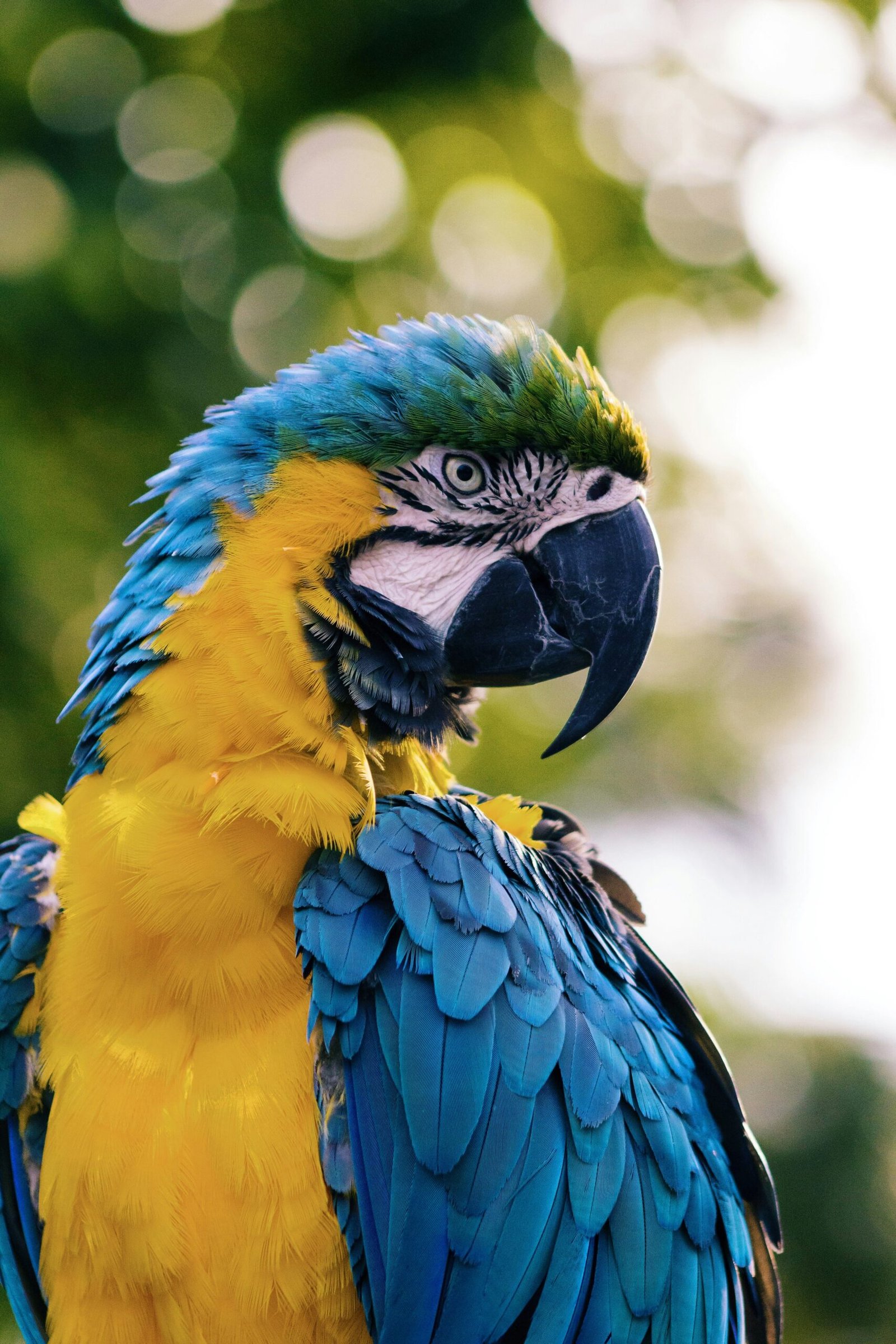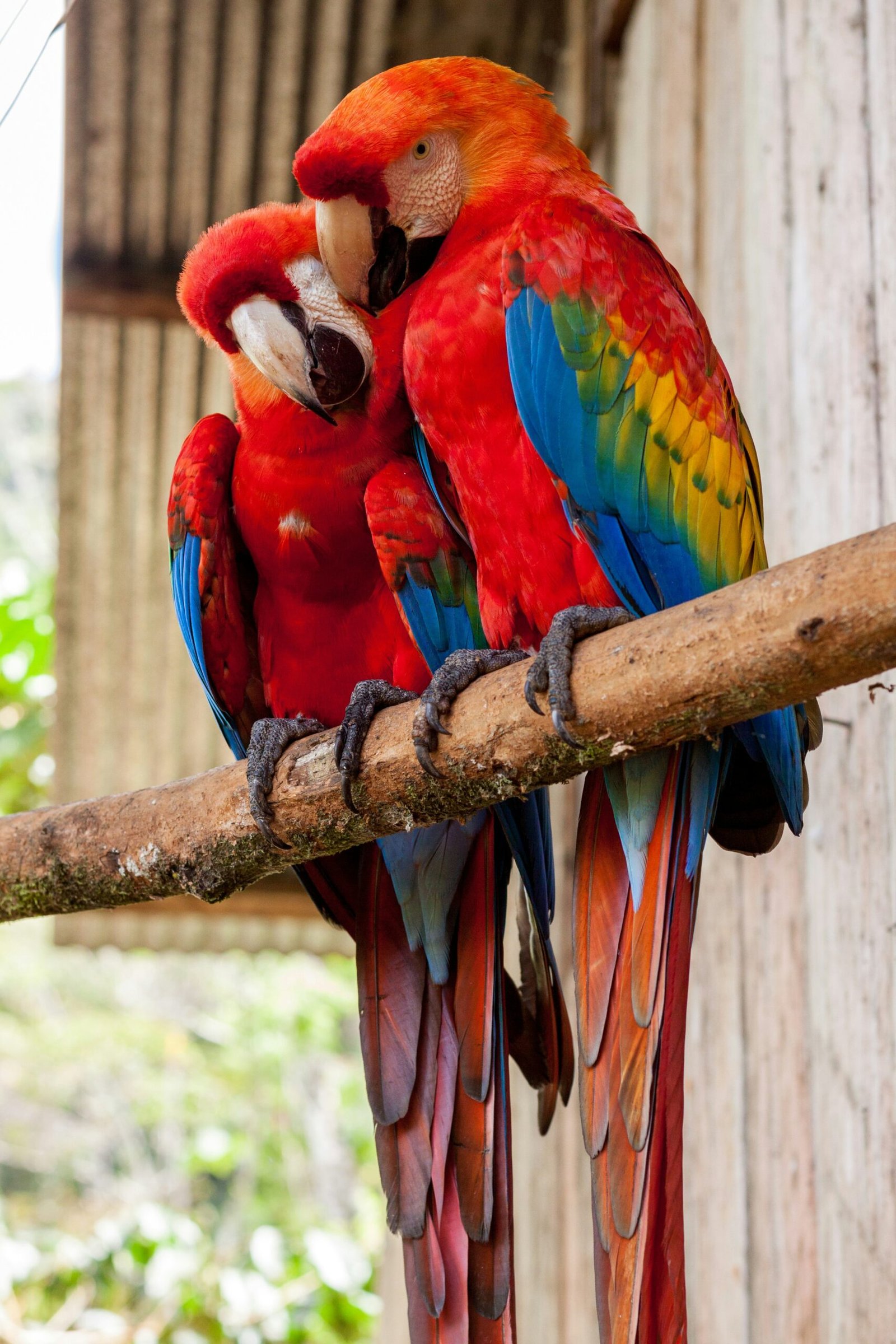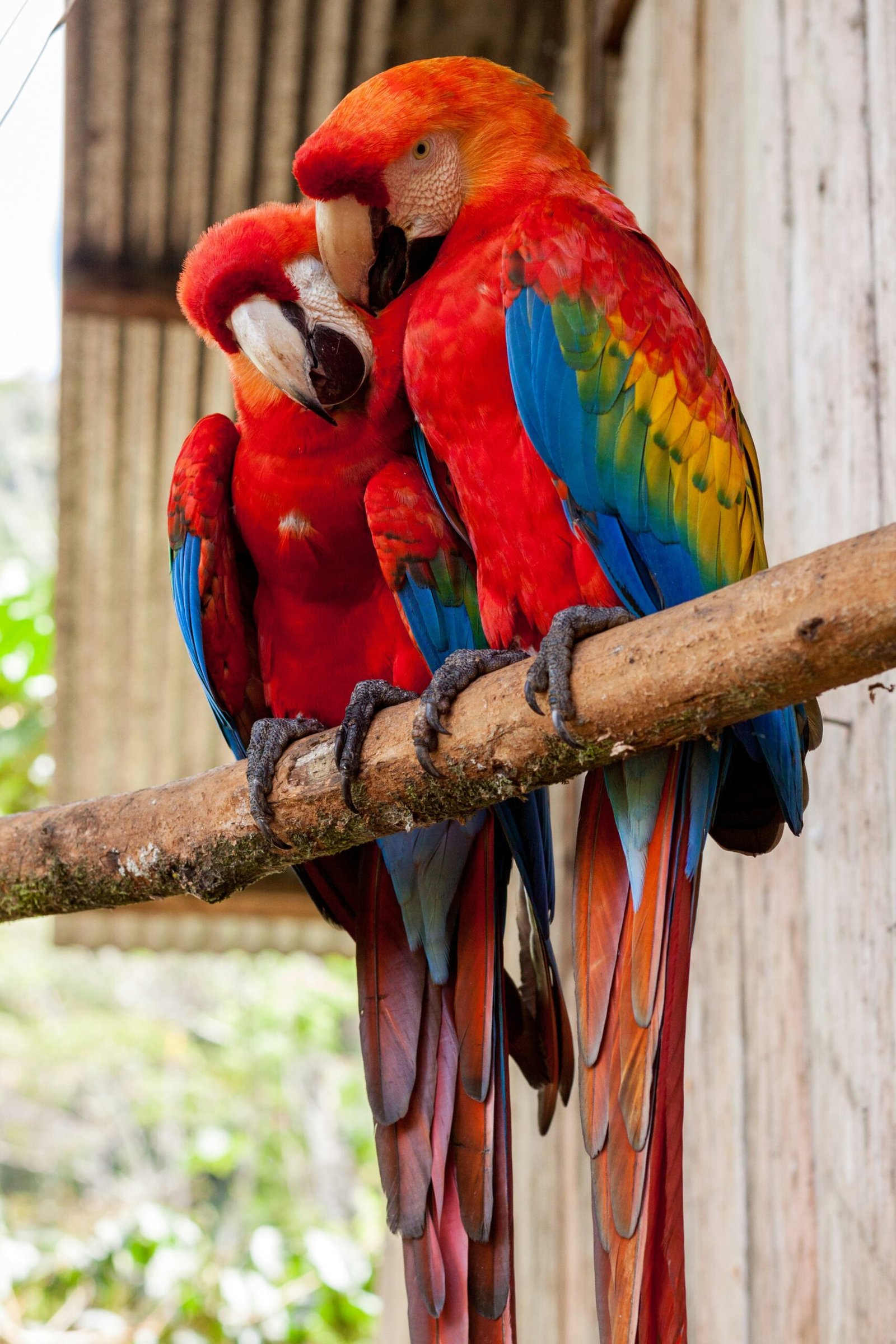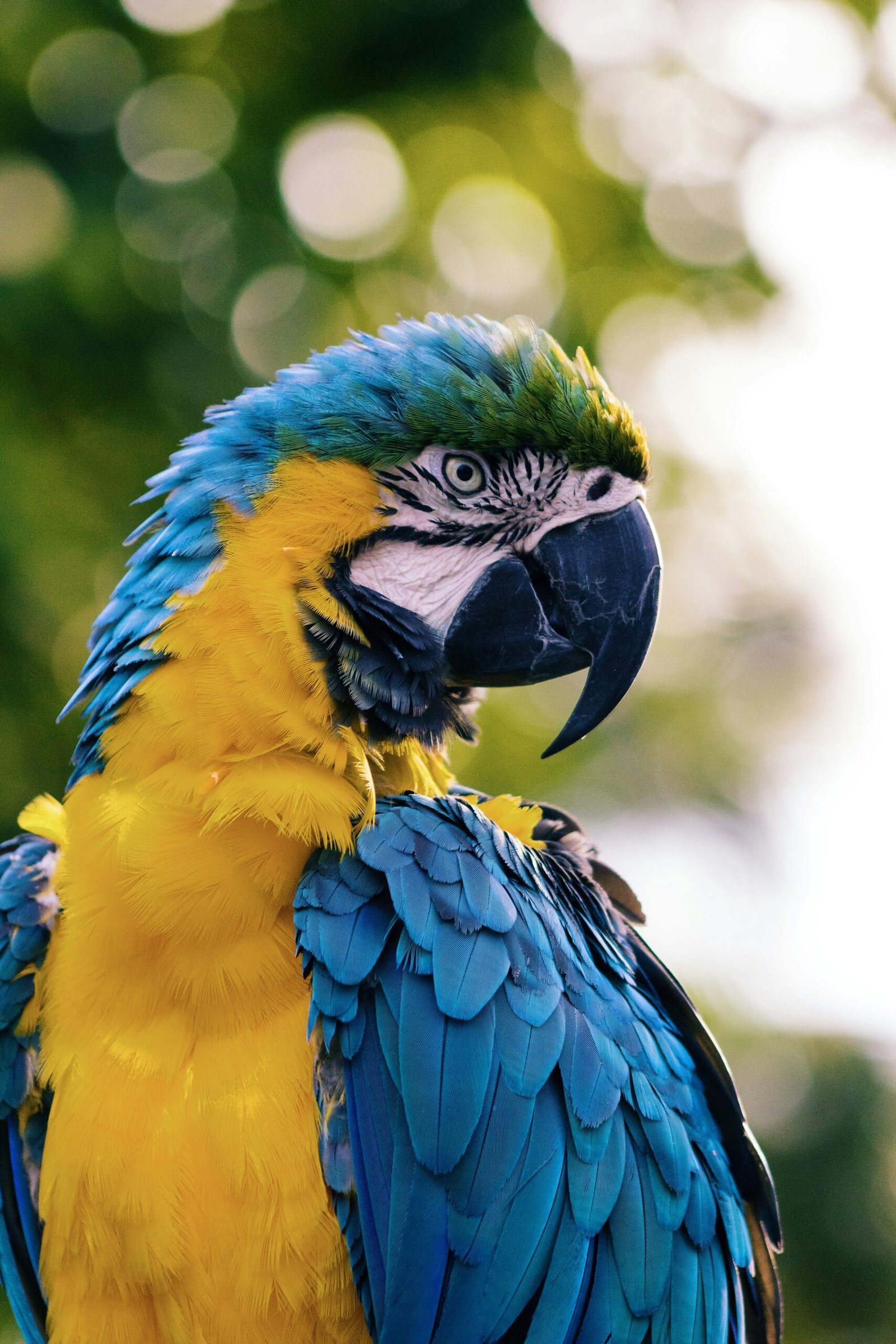Teaching your Quaker parrot to step up is an essential skill that not only strengthens the bond between you and your pet but also ensures more manageable and positive interactions. This foundational command is akin to training a dog to sit; it creates a framework for more advanced training and communication. When your Quaker parrot reliably steps up, you can handle them more easily, whether for routine activities like moving them to a different location or for more involved tasks such as grooming or veterinary visits.
The benefits of training your Quaker parrot to step up extend beyond mere convenience. It fosters trust and mutual understanding, making your bird feel more secure and reducing stress for both of you. A well-trained parrot is also less likely to develop behavioral issues, as the training process itself provides mental stimulation and physical exercise. Additionally, it can enhance the overall quality of life for your parrot, as they become more accustomed to human interaction and handling.
In the following sections, we will delve into the training process, breaking it down into manageable steps that you can follow at home. This will include selecting the appropriate environment for training, using positive reinforcement techniques, and troubleshooting common challenges. By understanding and implementing these strategies, you will be well on your way to teaching your Quaker parrot to step up, thereby fostering a harmonious and rewarding relationship with your feathered companion.
Understanding Your Quaker Parrot’s Behavior
Before delving into the specifics of training your Quaker parrot to step up, it is crucial to grasp the nuances of its behavior and body language. Much like curious toddlers, Quaker parrots exhibit a range of behaviors that communicate their feelings and intentions. Familiarizing yourself with these behavioral traits will not only aid in effective training but also foster a stronger bond with your feathered companion.
Quaker parrots are known for their inquisitive nature and social demeanor. They thrive on interaction and mental stimulation. Observing your Quaker parrot’s daily activities can provide valuable insights into its personality. Common behaviors include head bobbing, feather fluffing, and vocalizations, each with distinct meanings. For instance, head bobbing often indicates excitement or eagerness, while feather fluffing can signify contentment or a desire to preen.
Reading your Quaker parrot’s body language is essential in understanding its emotional state. A relaxed parrot will have smooth, sleek feathers and a calm posture, whereas a stressed or uncomfortable bird may exhibit signs such as puffed-up feathers, rapid tail flicking, or a crouched stance. Recognizing these indicators will help you adjust your approach during training sessions, ensuring a positive and stress-free experience for your parrot.
Additionally, it is important to identify signs of stress or discomfort to prevent potential behavioral issues. A Quaker parrot under duress might exhibit behaviors such as excessive screaming, feather plucking, or aggressive biting. By acknowledging these signs early on, you can take proactive steps to alleviate stressors, such as altering the environment or modifying interaction patterns.
Understanding your Quaker parrot’s behavior is the foundation for effective training. By attuning yourself to its body language and emotional cues, you create a supportive environment that encourages learning and trust. This understanding will serve as a cornerstone as you embark on the journey of teaching your Quaker parrot to step up.
Creating a Safe Training Environment
Establishing a safe and controlled training environment is fundamental when teaching your Quaker parrot to step up. Much like preparing a quiet study space for a student, the right setting can significantly influence your bird’s learning process. Begin by selecting a location within your home that is free from distractions. This area should be away from high-traffic zones, loud noises, and other pets that might disrupt the training session. A serene and consistent environment helps your parrot to focus, fostering a sense of security and readiness to learn.
Minimizing distractions is key. Ensure that televisions, radios, and other potential sources of noise are turned off during the training. Additionally, close windows to block out external disturbances such as traffic or neighborhood sounds. By eliminating these distractions, you create a calm atmosphere that allows your Quaker parrot to concentrate solely on the training task at hand.
Equally important is ensuring that your parrot feels secure in the training space. This can be achieved by maintaining a stable and familiar environment. Avoid frequently changing the training location, as consistency aids in reducing anxiety and building confidence. The training area should also be well-lit and comfortable, with no sudden movements or shadows that might startle your bird.
Having all necessary tools within reach is another critical factor in creating an effective training environment. Before beginning the session, gather all essential items such as treats, a perch, and any other training aids you might need. This preparation will allow you to focus entirely on the training process without having to interrupt it to fetch forgotten items. Being well-prepared ensures a smooth and continuous session, which is crucial for maintaining your parrot’s attention and reinforcing positive behavior.
By thoughtfully setting up a safe and controlled environment, you lay the groundwork for successful training sessions. This approach not only helps your Quaker parrot to learn the “step up” command more effectively but also strengthens the bond between you and your feathered companion.
Using Positive Reinforcement
Positive reinforcement is the cornerstone of successful parrot training, including teaching your Quaker parrot to step up. Much like children who respond favorably to rewards, Quaker parrots thrive on positive feedback. Understanding the types of rewards, the timing of these rewards, and the importance of consistency and patience can significantly enhance your training sessions.
Firstly, identifying the types of rewards that motivate your Quaker parrot is crucial. Common rewards include small treats such as sunflower seeds, pieces of fruit, or specialized bird treats. It’s important to use these rewards sparingly to maintain their effectiveness. Additionally, verbal praise and gentle petting can serve as powerful reinforcements, especially when combined with tangible treats. Observing your parrot’s preferences can help determine the most effective rewards.
Timing is another critical element in utilizing positive reinforcement effectively. Rewards should be given immediately after the desired behavior is performed. When you ask your Quaker parrot to step up and it complies, promptly offer the reward. This immediacy helps your parrot associate the action with the positive outcome, reinforcing the behavior. Delayed rewards can confuse your bird, making the training process less effective.
Consistency and patience are equally important in the training process. Consistently rewarding your parrot every time it steps up will strengthen the behavior over time. However, consistency should also extend to the cues you use. Use the same verbal command and hand gesture each time you ask your parrot to step up. Your parrot will learn to associate the specific command with the action and the subsequent reward.
Patience is vital, as training a Quaker parrot can take time. Some parrots may learn quickly, while others require more repetition and encouragement. Avoid showing frustration or impatience, as this can negatively impact your parrot’s learning experience. Instead, maintain a calm and supportive demeanor, celebrating small successes along the way.
By focusing on positive reinforcement, you can create a supportive and encouraging environment for your Quaker parrot to learn and thrive. This method not only facilitates the training process but also strengthens the bond between you and your feathered companion.
Step-by-Step Guide to Teaching ‘Step Up’
Teaching your Quaker parrot to step up can be a rewarding experience for both you and your pet. This essential command not only fosters a bond between you and your bird but also makes handling and interaction easier. Follow these steps to ensure a smooth training process:
Preparation
Before you start, ensure that your parrot is comfortable with your presence. Spend some time near the cage, talking softly to your bird. Make sure your parrot is not stressed or anxious. Training sessions should be short, around 10-15 minutes, and conducted in a quiet, distraction-free environment.
Step 1: Establish Trust
Begin by slowly approaching your Quaker parrot. Offer a treat through the cage bars to encourage positive association. Speak in a calm, soothing voice and avoid sudden movements. Repeat this process several times until your bird willingly takes the treat from your hand.
Step 2: Introduce the Perch
Use a perch or your finger as a stepping platform. Slowly place the perch just above your bird’s feet, gently nudging the chest area. Simultaneously, say the command “step up” in a clear, consistent tone. Patience is key here; give your parrot time to understand the gesture and command.
Step 3: Reward Progress
Once your parrot steps onto the perch or your finger, immediately reward it with a treat and verbal praise. Positive reinforcement is crucial in teaching your Quaker parrot to step up. Repeat this action several times during each session, always rewarding successful attempts.
Step 4: Gradual Increase
Gradually increase the distance and height of the perch as your parrot becomes more comfortable with the command. Practice in different locations and at various times of the day to reinforce the behavior. Consistency and repetition are essential for solidifying this training.
Step 5: Practice and Patience
Continue practicing the “step up” command daily. Some parrots may learn quickly, while others may take more time. Be patient and avoid showing frustration. Consistently reward positive behavior and maintain a calm demeanor throughout the training process.
By following these steps, you will be well on your way to teaching your Quaker parrot to step up, enhancing your bond and making your interactions more enjoyable.
Dealing with Common Challenges
Training your Quaker parrot to step up can present a variety of challenges, including fear, biting, and reluctance to comply. Understanding these obstacles is essential to create a positive and effective training environment.
One of the most common issues is fear. Quaker parrots are naturally cautious, and sudden movements or loud noises can startle them. To overcome this, it is crucial to create a calm and quiet setting. Gradually introduce your hand to the parrot’s space without making any abrupt gestures. Patience is key; allow your bird to get accustomed to your presence before attempting to teach it to step up.
Biting is another challenge that trainers often face. Parrots may bite out of fear, territorial behavior, or simply because they are testing boundaries. If your parrot bites, avoid reacting with loud noises or sudden movements. Instead, gently but firmly say “no” and withdraw your hand for a moment. Consistency in your response will help the parrot understand that biting is not acceptable.
Reluctance to step up is a hurdle many owners encounter. This can stem from a lack of trust or previous negative experiences. To address this, use positive reinforcement techniques. Offer treats and verbal praise when the parrot shows interest in your hand. Gradually, the bird will associate stepping up with positive outcomes. It’s also helpful to practice short, frequent training sessions to maintain the parrot’s interest and avoid overwhelming it.
Additionally, ensure that your parrot’s living environment is conducive to training. A clean, stimulating cage with toys can reduce stress and promote a willingness to learn. Observe your bird’s behavior and adapt your training approach accordingly. Every parrot is unique, and finding the right balance of patience and encouragement will pave the way for successful training.
By addressing these common challenges with practical solutions, you can enhance your Quaker parrot’s learning experience and foster a stronger bond between you and your feathered friend.
Maintaining the ‘Step Up’ Command
Once your Quaker parrot has successfully learned to step up, the journey does not end there. Maintaining this behavior is essential to ensure that your feathered friend remains responsive and well-trained. Similar to keeping a clean house, regular practice and reinforcement are key to sustaining the ‘step up’ command. Incorporating this command into your daily routines can help maintain the behavior effectively.
Firstly, make it a habit to ask your parrot to step up multiple times throughout the day. This could be when you move them from their cage to a play area or when you transition them back. The consistency will reinforce the behavior and make it a natural part of your parrot’s routine. It’s vital to remain patient and calm, offering praise and rewards to encourage continued obedience.
The importance of regular practice cannot be overstated. Just as people can forget skills they do not use regularly, parrots need consistent practice to maintain their training. Dedicate a few minutes each day specifically for ‘step up’ practice. Use treats, affection, or verbal praise to make the experience positive for your bird. This consistent reinforcement helps cement the command in your parrot’s behavior repertoire.
To keep the training engaging and fun, vary the context in which you ask your parrot to step up. Use different perches, locations, or even toys to add a layer of novelty to the practice sessions. This not only prevents boredom but also ensures that your parrot responds to the command in various situations. Engaging your bird in interactive play while using the ‘step up’ command can also enhance their cognitive abilities and promote a stronger bond between you and your pet.
Incorporating the ‘step up’ command into daily routines, practicing regularly, and making training sessions enjoyable are all crucial for maintaining this important behavior. With consistent effort and positive reinforcement, your Quaker parrot will continue to step up reliably, making interactions smoother and more enjoyable for both of you.
Additional Resources and Links
Accessing reliable information and resources can significantly aid your training process. Leveraging external guidance ensures you are well-equipped with the necessary knowledge to effectively teach your Quaker parrot to step up. Below are ten authoritative sites that provide further reading, expert advice, and community support for parrot owners.
- The Parrot Society UK: Offers comprehensive care guides and articles from avian specialists, making it a valuable resource for understanding parrot behavior and training techniques.
- Bird Tricks: Provides tutorials, blogs, and video content tailored for parrot training, including step-up commands and other behavioral training tips.
- Avian Welfare Coalition: Focuses on the well-being of birds, offering resources on ethical parrot care and training methodologies.
- Parrot Forums: A community-driven site with forums where parrot owners share experiences, seek advice, and discuss training challenges and successes.
- Quaker Parrots: Dedicated to Quaker parrots specifically, this site provides detailed care sheets, training advice, and a supportive community for Quaker parrot owners.
- The Exotic Pet Vet: Offers insights from a veterinary perspective, including health tips and training strategies for maintaining a happy, healthy parrot.
- Good Bird Inc.: Specializes in positive reinforcement training techniques with resources such as DVDs, books, and articles to help you teach your parrot to step up and more.
- Beauty of Birds: Provides extensive information on parrot species, care, and training, with a section dedicated to Quaker parrots.
- World Parrot Trust: A global organization offering education on parrot conservation and care, including training tips and best practices.
- PetMD: Features articles from veterinarians about parrot health, behavior, and training, ensuring you have medically-backed advice for your Quaker parrot.
These resources provide a wealth of information to support your journey in training your Quaker parrot to step up. Utilizing these reputable sites can enhance your understanding and approach, ensuring a successful and rewarding training experience.
Frequently Asked Questions (FAQs)
When teaching your Quaker parrot to step up, it’s natural to have a variety of questions. Below, we address some of the most common inquiries to help ensure a smooth training process.
How long does it take for a Quaker parrot to learn to step up?
The time it takes for a Quaker parrot to learn to step up can vary greatly depending on the individual bird and its previous experiences. Generally, with consistent practice, a Quaker parrot can begin to understand and respond to the ‘step up’ command within a few days to a few weeks. Patience and positive reinforcement are key to successful training.
What should I do if my Quaker parrot refuses to step up?
If your Quaker parrot refuses to step up, remain calm and avoid forcing the bird to comply. Instead, try to identify any potential reasons for its reluctance, such as fear or discomfort. Offering a favorite treat or gently coaxing your parrot with a soothing voice can encourage cooperation. Gradually build trust and ensure that the training environment is free from distractions.
Can I use a perch instead of my hand for teaching the step up command?
Yes, you can use a perch to teach the step up command if your Quaker parrot is initially hesitant to step onto your hand. A perch can serve as a transitional tool, helping your bird become more comfortable with the ‘step up’ motion. Once your parrot is confident stepping onto the perch, you can gradually introduce your hand as the next step.
How often should training sessions be conducted?
Short, frequent training sessions are more effective than long, infrequent ones. Aim for two to three sessions per day, each lasting about 5-10 minutes. Consistency is crucial, so try to maintain a regular schedule. This approach helps reinforce the behavior without overwhelming your Quaker parrot.
What are some signs that my Quaker parrot is ready to step up?
Signs that your Quaker parrot is ready to step up include a relaxed posture, a calm demeanor, and moving towards your hand or perch. If your bird shows interest in your hand and appears curious rather than fearful, it is likely ready to engage in the step up training.
By addressing these frequently asked questions, we hope to provide further clarity and support in your journey to teach your Quaker parrot to step up. Remember, patience, consistency, and positive reinforcement are the cornerstones of successful parrot training.
Conclusion
Training a Quaker parrot to step up is a rewarding endeavor that requires patience, consistency, and positive reinforcement. Throughout this blog post, we’ve outlined the essential steps to guide you in teaching your parrot this crucial command. By understanding your parrot’s behavior, creating a comfortable environment, and using consistent commands, you pave the way for successful training sessions.
It’s important to remember that every parrot is unique, and the pace of learning can vary. Keeping training sessions short and engaging helps maintain your parrot’s interest and prevents frustration. Using treats and praise as positive reinforcement will encourage your Quaker parrot to associate stepping up with positive experiences.
Patience is key. Some days may be more challenging than others, but consistency in your approach will yield the best results over time. Building a trusting relationship with your parrot is fundamental. The more comfortable and secure your parrot feels with you, the more responsive they will be to your training efforts.
As you embark on this journey, remember that your dedication and love play a significant role in your parrot’s success. While the process may require time and effort, the bond you form with your Quaker parrot will be immensely rewarding. With perseverance and a positive attitude, your parrot will eventually master the step-up command, making interactions smoother and more enjoyable for both of you.
In conclusion, teaching your Quaker parrot to step up is not just about mastering a command; it’s about fostering a deep, trusting relationship. The skills and trust developed during training will enhance your bond and create a harmonious living environment. So, stay committed, be patient, and enjoy the journey of training your beloved Quaker parrot.







